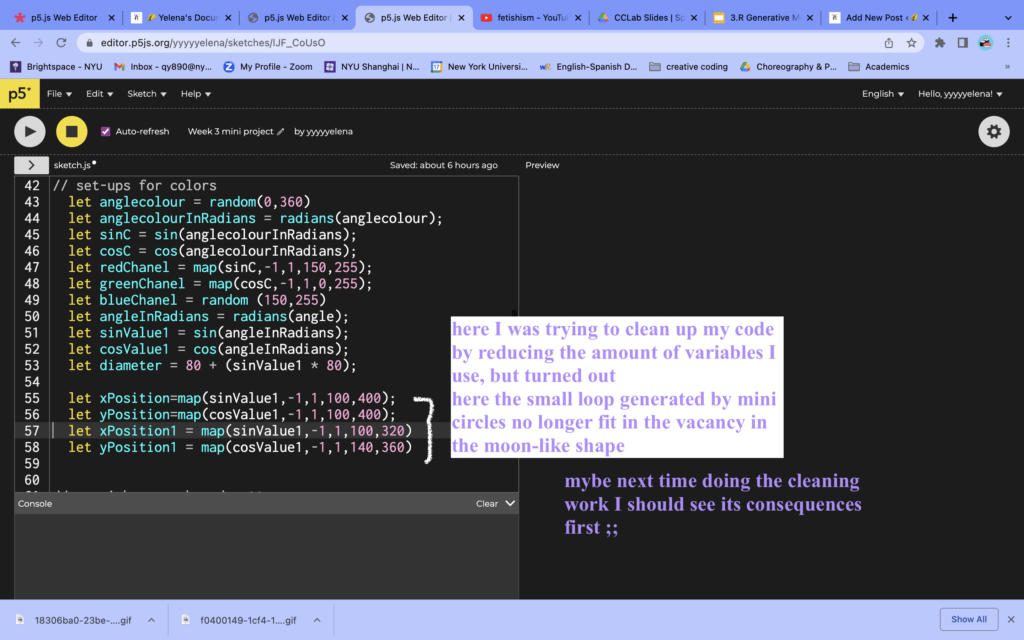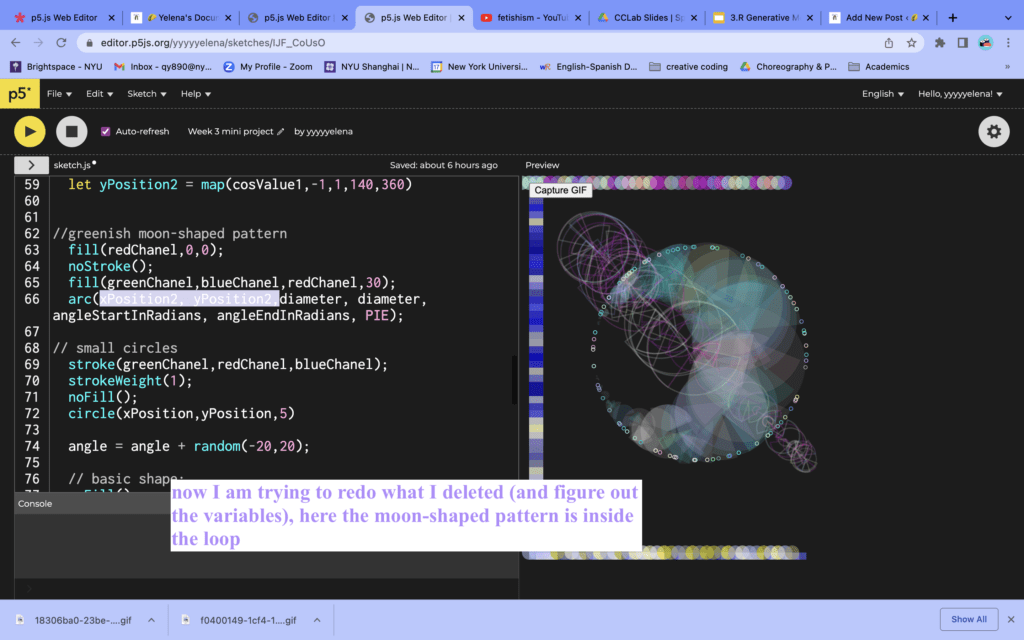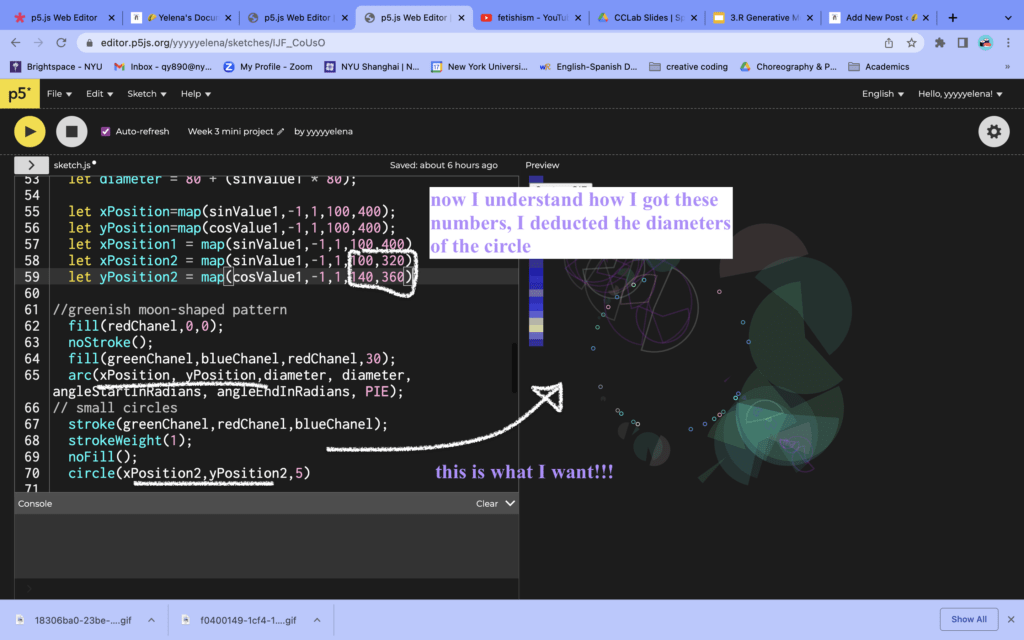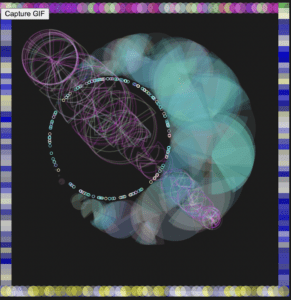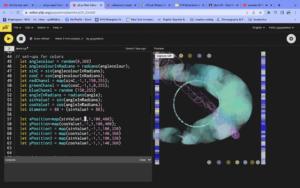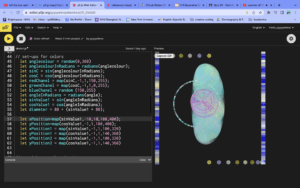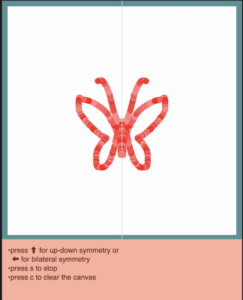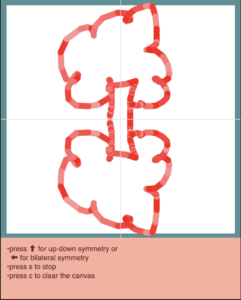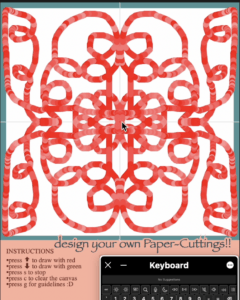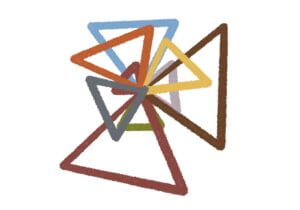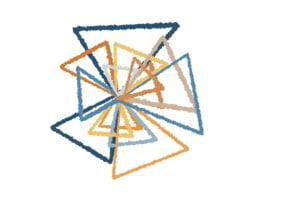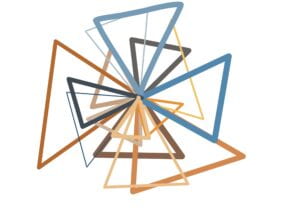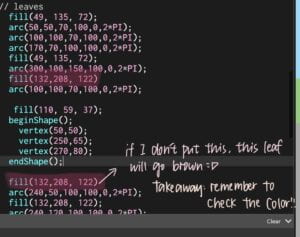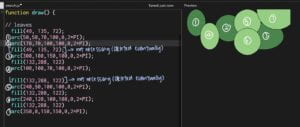final piece: 
This week we learned about “for loop”, “push/pop”, “translate”, “rotate”, “scale”.
-
-
- “for loop” makes coding a lot easier when creating repetitive patterns!
- “translate” & “rotate” is a bit challenging for me because I need to have a general idea of the coordinate before using them ((which I am so terrible at 🙁 but good news is I managed to figure them out when answering prompt 2!!
-
These nine pieces actually took me a long long time because my computer stopped responding serval times, so I lost my codings ;; But I did enjoy the process 🙂
I didn’t use the triangle shape here because it is a little bit complicated for me to figure out 3 coordinates in the for loop. So that could be something for me to explore in the future.
Prompt 1: Difference and similarities between drawing by hand from observation and programming the computer to draw
-
- One major difference is the certainty of the strokes. When observing drawing by hand, you cannot tell accurately what’s the painter’s next step. But if you program the computer (and not using random), you already have a general scope of what the picture to come out will look like before running it (in most cases). Using computer programs to draw also makes repeating certain elements and aligning the elements easier.
- The similarity I can think of is that both involve planning before drawing in most cases:)
Prompt 2: Properties in the repetition
-
- I employed the “for loop” in almost all of the nine paintings. The most noticeable (and challenging) one for me is to understand how to generate grid patterns in the paintings. (Although I didn’t end up having any grid patterns in the final piece because my webpage literally stopped responding six times when I was so close to get the desired result ;;) Using two variables instead of one is very important in generating grids, and changing the increment can change the size of the grid.
- Another one is the “rotate()” function. I really enjoy the spiral created by rotate. & here’s my exploration on how it works:




Prompt 3: a good generative pattern?
-
- I think a good generative pattern has certain elements that are repeated again and again, and have nuances. I really enjoy the visual impact those examples in the ppt give me. It’s random and abstract, but at the same time very aesthetic.
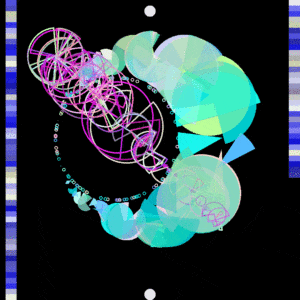
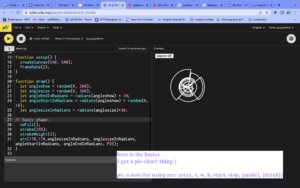 I was (and still am) very obsessed with cleaning up my codes and cutting the variables I used, but things didn’t work out as I expected:
I was (and still am) very obsessed with cleaning up my codes and cutting the variables I used, but things didn’t work out as I expected:
